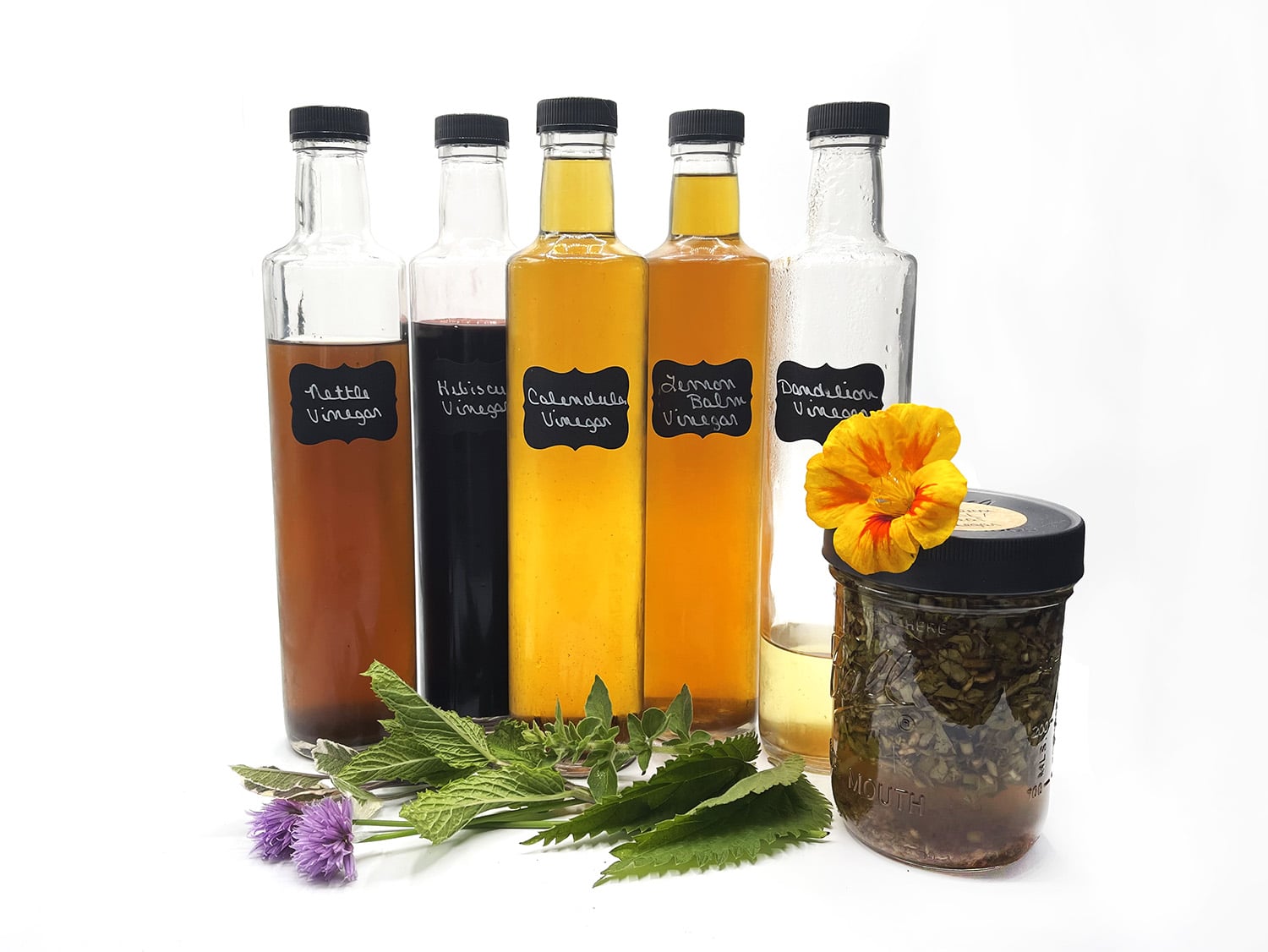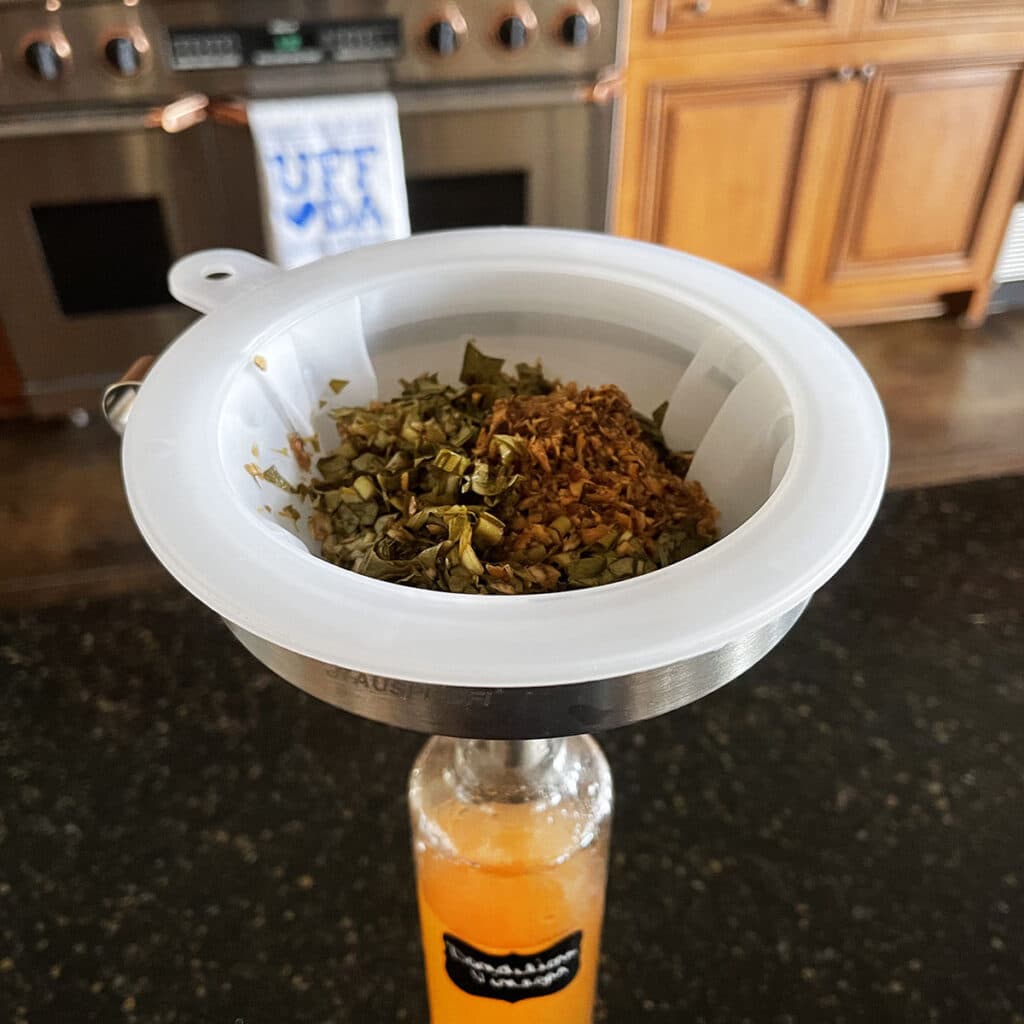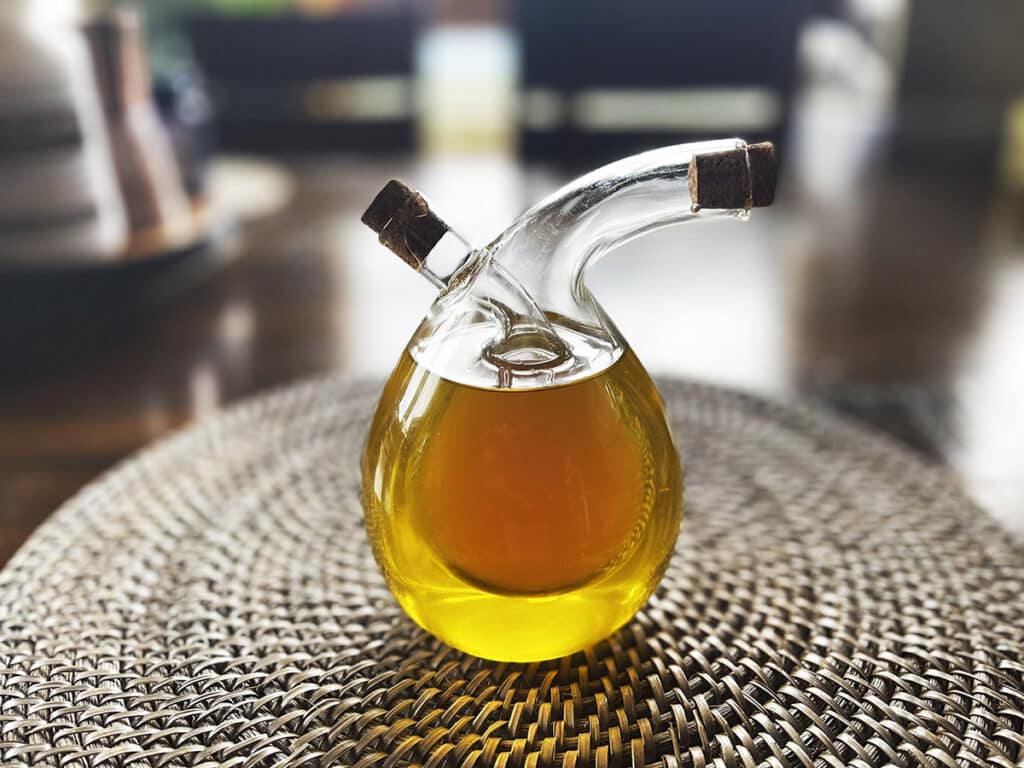Once upon a time, before the advent of distilled alcohol, liquid herbal extracts were made one of three ways: with water, wine or vinegar.
As a menstruum, vinegar is nowhere near as effective as alcohol at drawing out an herb’s medicinal properties; however, they can be very useful for making weak extracts for those who can’t or shouldn’t have alcohol (children, people with alcohol dependency, etc.)
It can also assist alcohol in extracting certain plant constituents. Caffeine, quinine and berberine are examples of basic alkaloids that are attracted to vinegar’s acetic acid.
For example, acidifying the antispasmodic herb lobelia (Lobelia inflata) with a bit of vinegar before tincturing in alcohol increases the solubility of the lobeline alkaloids and will result in a more potent end product. This type of preparation is known as an acetous tincture or aceta.
Be aware that alkaloids are precipitated (separated) out of solution by tannins. So if you’re trying to capture the berberine from some Oregon grape root, you probably wouldn’t want to mix it with a tannin-rich substance such as witch hazel (Hamamelis virginiana) or black tea (Camellia sinensis).
Vinegar is also among the best ways to extract minerals from an herb.
Some herbs that extract well in vinegar:
- alfalfa
- astragalus
- basil
- bloodroot
- calendula
- California poppy
- caraway
- cardamom
- cayenne
- celandine
- chickweed
- chives
- cinchona
- clove
- dandelion
- dill
- elder
- horsetail
- lobelia
- goldenseal
- lavender
- lemon balm
- lemongrass
- motherwort
- mugwort
- nasturtium
- nettle
- oatstraw
- oregano
- raspberry leaf
- red clover
- rosemary
- Oregon grape
- pine
- sage
- tarragon
- thimbleberry leaf
- thyme
- yarrow
- alfalfa
- astragalus
- basil
- bloodroot
- calendula
- California poppy
- caraway
- cardamom
- cayenne
- celandine
- chickweed
- chives
- cinchona
- clove
- dandelion
- dill
- elder
- horsetail
- lobelia
- goldenseal
- lavender
- lemon balm
- lemongrass
- motherwort
- mugwort
- nasturtium
- nettle
- oatstraw
- oregano
- raspberry leaf
- red clover
- rosemary
- Oregon grape
- pine
- sage
- tarragon
- thimbleberry leaf
- thyme
- yarrow
Herbal vinegar in the kitchen
With a few exceptions (such as lobelia) I don’t typically use vinegar in medicinal tincturing, but I absolutely LOVE making them for culinary purposes. They’re an excellent make-ahead Kitchen Helper and a simple way to incorporate extra minerals, water-soluble nutrients, color and FLAVOR into your cooking.
I try to keep a constant supply of nettle and dandelion-infused apple cider vinegars around that I use to acidify bones before making a batch of bone broth. They also get incorporated into any recipes that call for vinegar such as salad dressings, marinades, sauces, pasta salads, oxymels and shrubs.
Chive-blossom vinegar is just dreamy. Basil and dill seed vinegars are delicious and versatile too.
Fruit-infused vinegars are super fun for making colorful and yummy salad vinaigrettes.
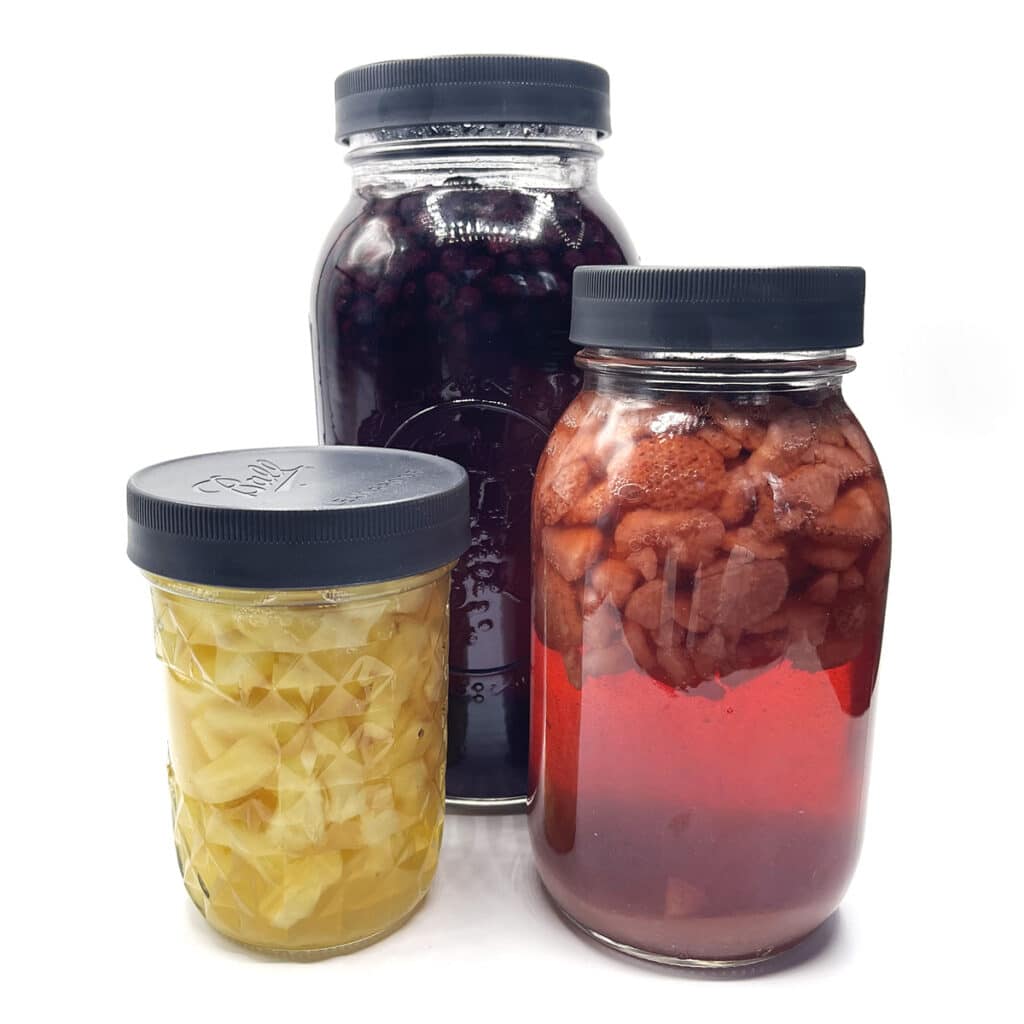
A gorgeous, deep purple blueberry-infused vinegar:
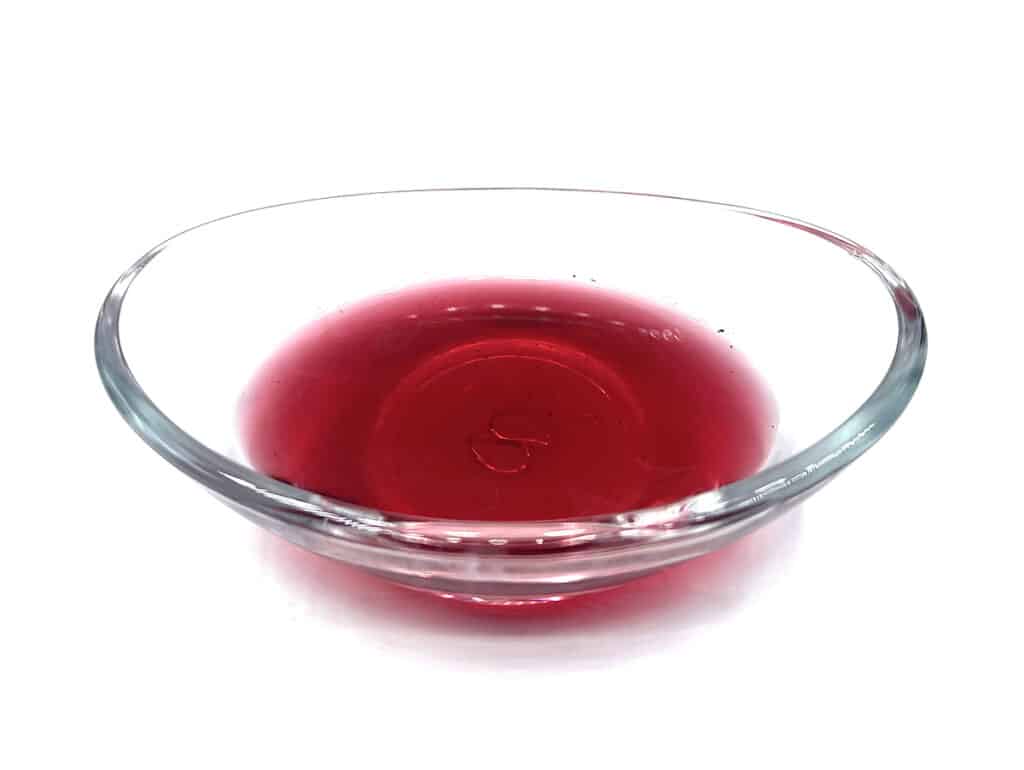
Beyond the kitchen
Outside the kitchen, herbal vinegars can also make nourishing treatments for skin and hair.
I’m fortunate to have a rather primeval-looking horsetail forest growing outside my front door, so I frequently make horsetail-ACV infusions for hair rinses and bath additives. Horsetail is loaded with the mineral silica – up to 25% – which extracts nicely in vinegar and helps support a healthy scalp, skin and super shiny hair. ♥
Making an acetum
In his book Making Plant Medicine, herbalist Richo Cech points out that apple cider vinegar is already somewhat “loaded” with its own extractives, meaning there’s less space for herb extractives to occupy. As a consumable, though, ACV is far healthier than “empty” household white vinegar, so the tradeoff is worth it. As Richo says, “nobody’s perfect.”
As with the fruit vinegars pictured above, I sometimes substitute a high-quality organic white wine vinegar when appearance and color are important to me. Otherwise I stick with the “live” apple cider vinegar for its health-giving properties.
According to Richo Cech, the basic formula for dry herb aceta is 1:7 — that is 1 part dried herb by weight to 7 parts undiluted apple cider vinegar by volume. I may have mentioned once or twice that I’m valedictorian of the Lazy Herbalist’s School of Making Things. I’m just not a huge fan of weighing and measuring when I don’t have to, so I typically just fill a jar about 1/3 full of dried herb then fill to the top with my ACV. Easy peesy lemon squeezy.
Dried herbs are the safest and most shelf stable way to go, but if you do decide to make a fresh herb acetum, you’ll want to wilt your herbs overnight first to allow some of the moisture to evaporate, and be sure to store your finished vinegar in the refrigerator.
It’s important not to use unprotected metal canning jar lids for your vinegar preparations. Over time, the acidic vinegar will eat away at the lid and pull undesirable chemicals into your infusion. You’ll either want to protect the lid with a piece of wax or parchment paper, sandwiched between the jar and the canning lid/ring, OR invest in a supply of plastic canning jar lids such as these.
Cover the jar with your plastic lid or metal lid with protective paper. Label and store out of direct sunlight for at least 2 weeks, shaking the jar periodically. As with most herbal infusions, you can speed things up by applying a bit of heat. Placing the infusion in a slow cooker on the warm setting (not low) or a dehydrator cabinet at 115F will speed things up considerably.
When the maceration is complete, carefully strain out the plant matter using a cheesecloth-lined colander or nut milk bag. I recently purchased a new stainless steel funnel that came with a nifty nylon mesh strainer that sits inside the rim of the funnel. I just love it! The insert makes straining smaller infusions so much easier, and the fine nylon mesh doesn’t allow any sediment though.
Seriously, this thing is pretty great:
Compost the marc (i.e. the plant pulp left after the last of the liquid has been squeezed out), and bottle your herbal vinegar in a glass jar or bottle with a tight-fitting lid.
Acetic tinctures made with dried herbs have a shelf life of around 6 months unless refrigerated.
Spread the love
Homemade herbal vinegars make really gorgeous and thoughtful gifts. Pair one with an herb-infused culinary oil and bottle it in one of these super cute little dual oil + vinegar cruets for a truly special present.
Seriously, who wouldn’t want one of these stunners containing a gourmet, infused-by-you oil and vinegar set??
Mine contains garlic-infused olive oil and habanero-infused apple cider vinegar ♥

